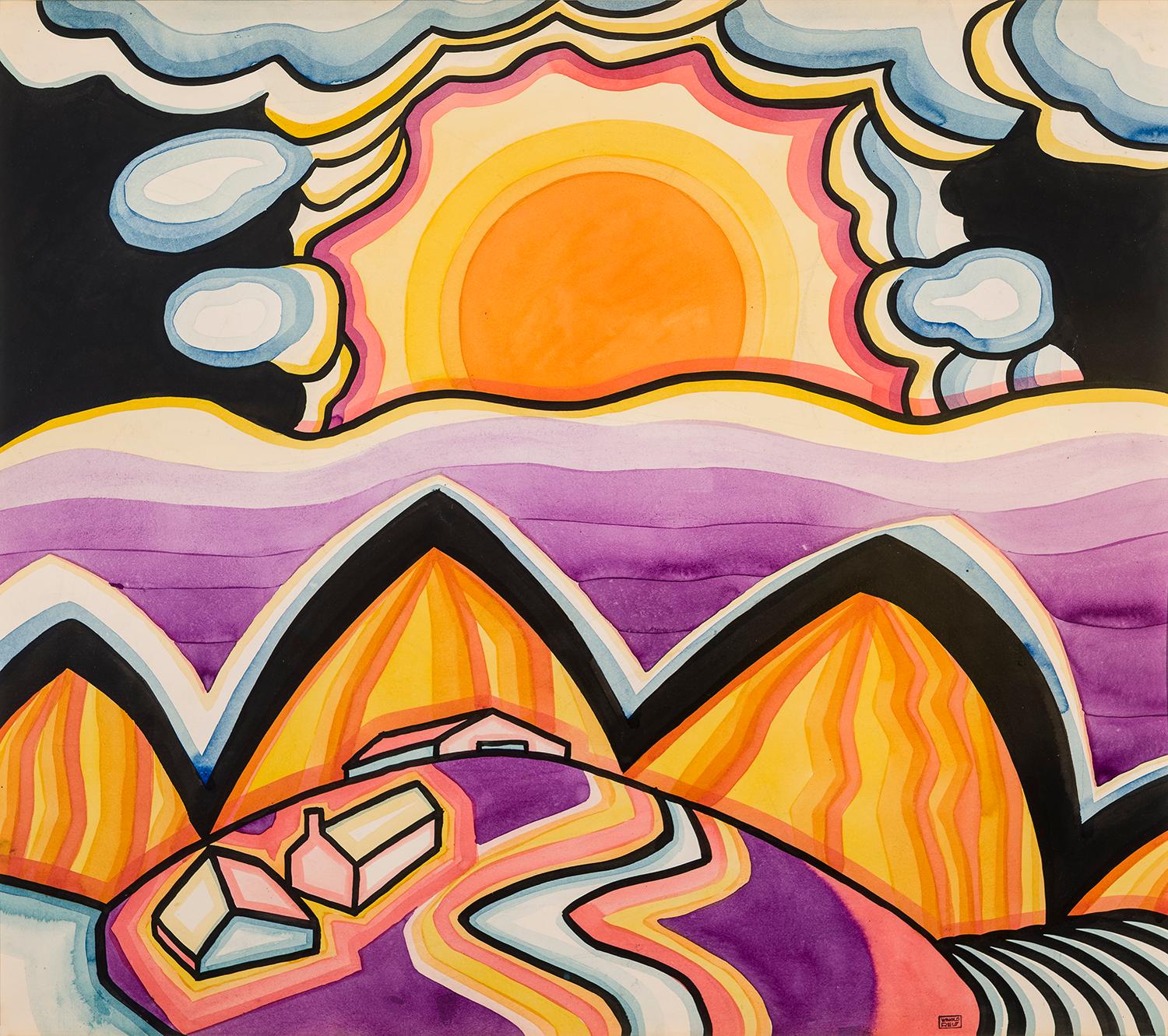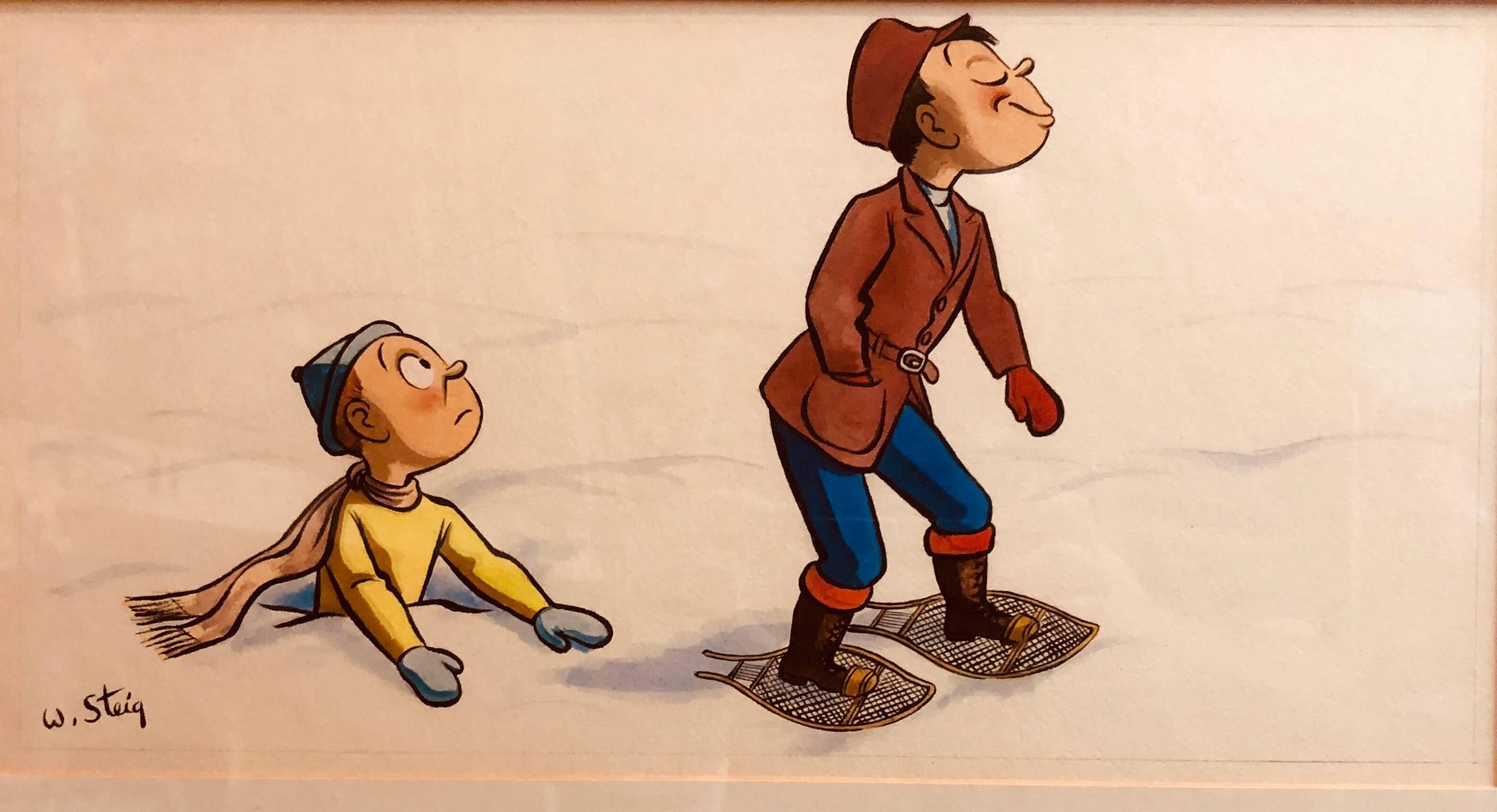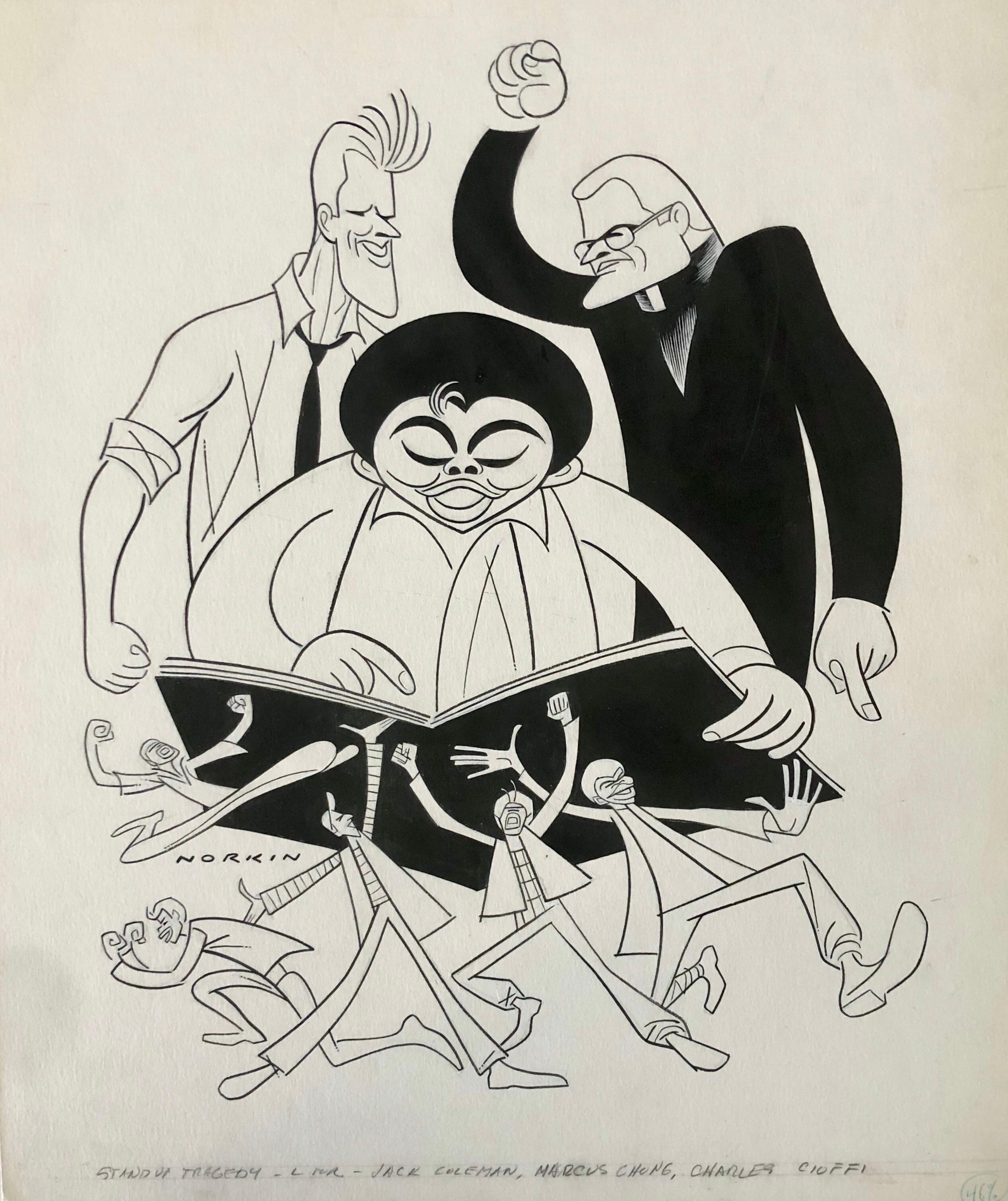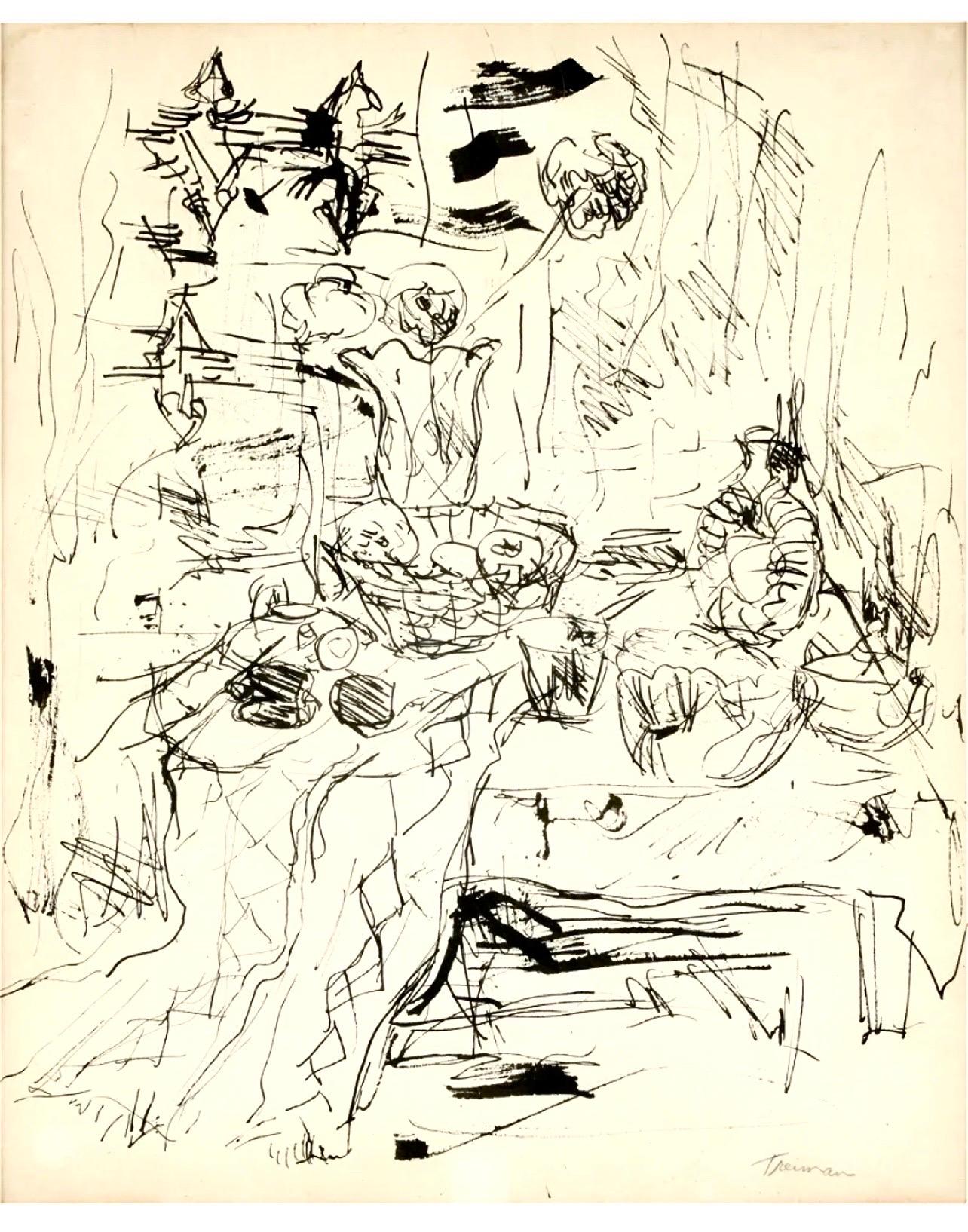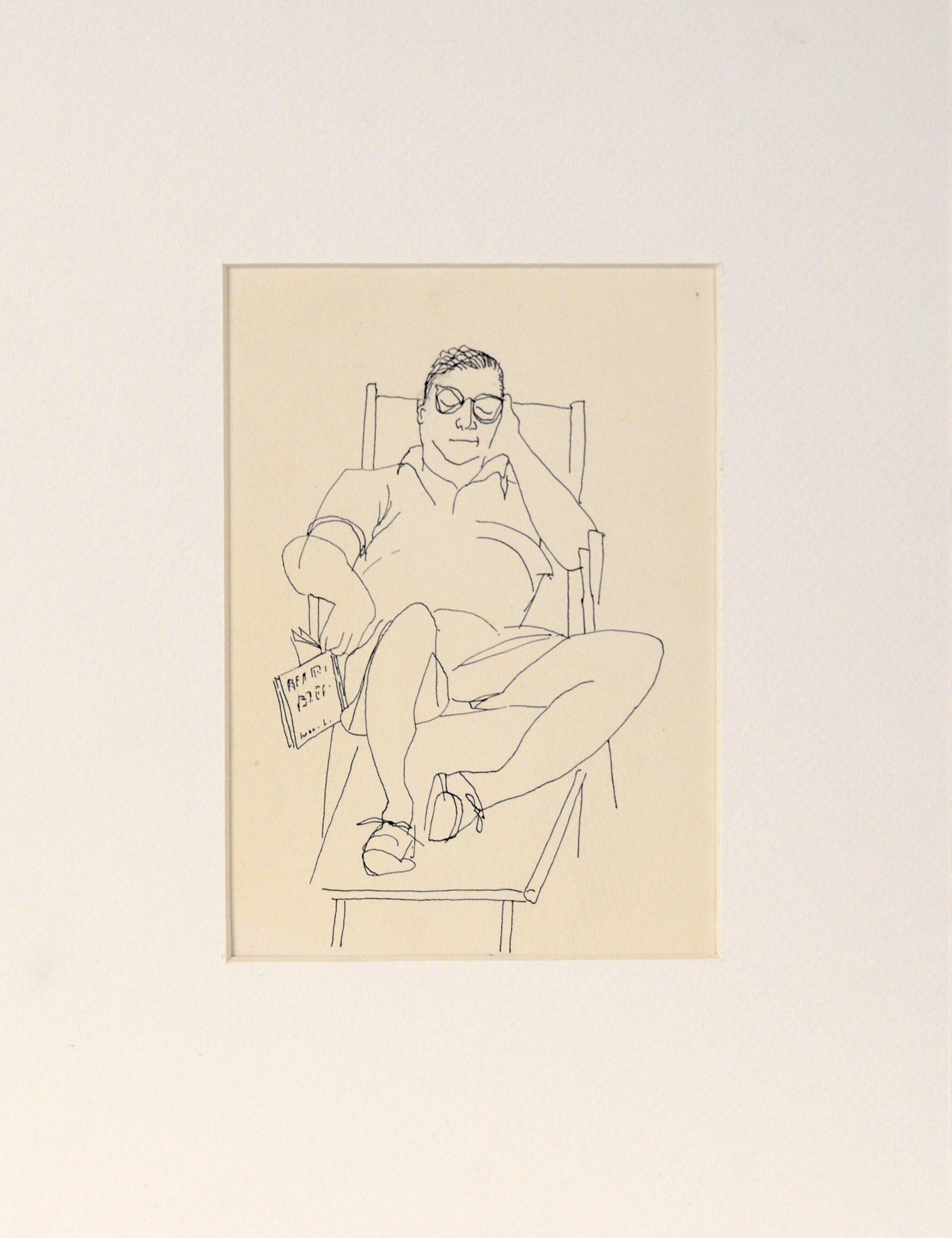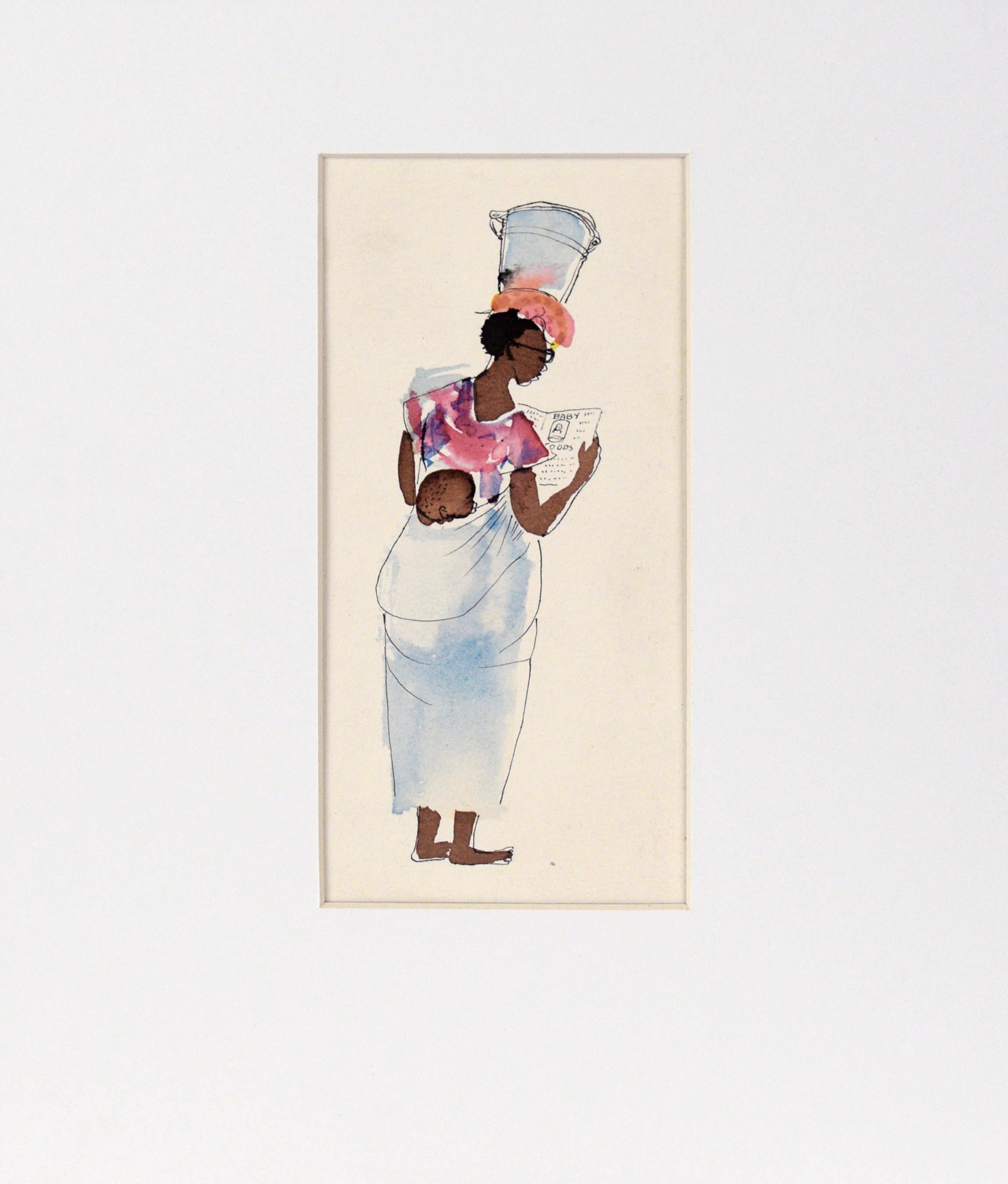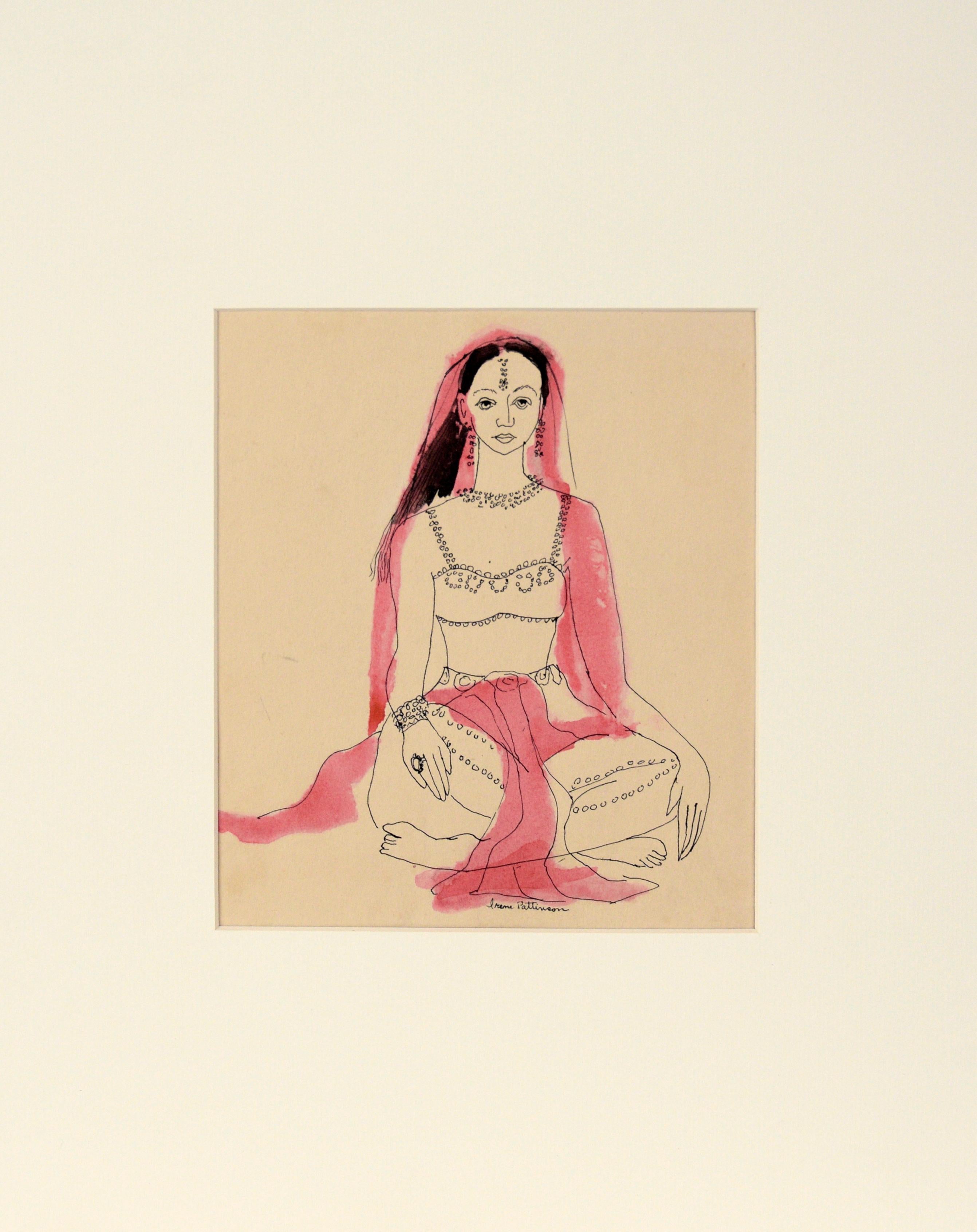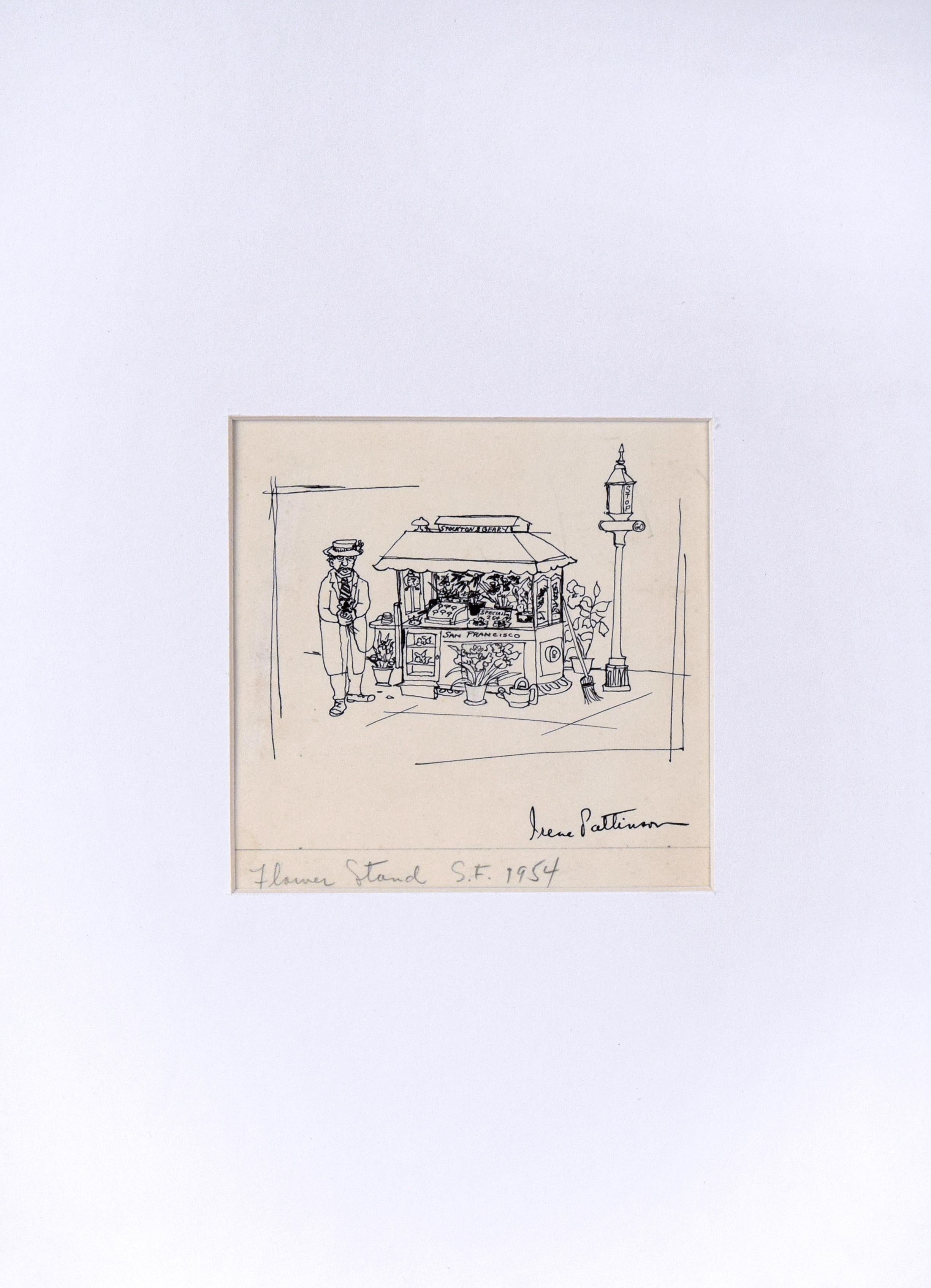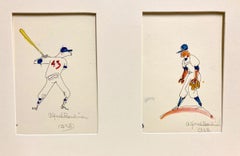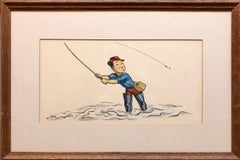Study For Lesbian Body Poster
View Similar Items
1 of 7
Kate MillettStudy For Lesbian Body Poster1977
1977
About the Item
- Creator:Kate Millett (1934 - 2017, American)
- Creation Year:1977
- Dimensions:Height: 12 in (30.48 cm)Width: 18 in (45.72 cm)
- Medium:
- Movement & Style:
- Period:
- Condition:
- Gallery Location:New York, NY
- Reference Number:1stDibs: LU5182248683
You May Also Like
- Alfred Bendiner, (Baseball Hitter and Pitcher -- The Philadelphia Phillies?)By Alfred BendinerLocated in New York, NYOf course it's possible that these baseball players aren't from a Philadelphia team, but I doubt it. There was so much drama and intrigue with both the Philadelphia Phillies and the ...Category
Mid-20th Century American Modern Figurative Drawings and Watercolors
MaterialsIndia Ink, Watercolor
- WoodstockBy Winold ReissLocated in New York, NYSigned (in white gouache, at lower left): Winold Reiss; (with estate stamp, at lower right): Winold / ReissCategory
20th Century American Modern Abstract Drawings and Watercolors
MaterialsInk, India Ink
Price Upon Request - Whimsical Fishing Illustration Cartoon 1938 Mt Tremblant Ski Lodge William SteigBy William Steig (b.1907)Located in Surfside, FLLighthearted Illustration of Outdoor Pursuits This one of a fisherman signed "W. Steig" Provenance: from Mrs. Joseph B. Ryan, Commissioned by Joe Ryan for the bar at his ski resort, Mount Tremblant Lodge, in 1938. Mont Tremblant, P.Q., Canada Watercolor and ink on illustration board, sights sizes 8 1/2 x 16 1/2 in., framed. In 1938 Joe Ryan, described as a millionaire from Philadelphia, bushwhacked his way to the summit of Mont Tremblant and was inspired to create a world class ski resort at the site. In 1939 he opened the Mont Tremblant Lodge, which remains part of the Pedestrian Village today. This original illustration is on Whatman Illustration board. the board measures 14 X 22 inches. label from McClees Galleries, Philadelphia, on the frame backing paper. William Steig, 1907 – 2003 was an American cartoonist, sculptor, and, in his later life, an illustrator and writer of children's books. Best known for the picture books Sylvester and the Magic Pebble, Abel's Island, and Doctor De Soto, he was also the creator of Shrek!, which inspired the film series of the same name. He was the U.S. nominee for both of the biennial, international Hans Christian Andersen Awards, as a children's book illustrator in 1982 and a writer in 1988. Steig was born in Brooklyn, New York in 1907, and grew up in the Bronx. His parents were Polish-Jewish immigrants from Austria, both socialists. His father, Joseph Steig, was a house painter, and his mother, Laura Ebel Steig, was a seamstress who encouraged his artistic leanings. As a child, he dabbled in painting and was an avid reader of literature. Among other works, he was said to have been especially fascinated by Pinocchio.He graduated from Townsend Harris High School at 15 but never completed college, though he attended three, spending two years at City College of New York, three years at the National Academy of Design and a mere five days at the Yale School of Fine Arts before dropping out of each. Hailed as the "King of Cartoons" Steig began drawing illustrations and cartoons for The New Yorker in 1930, producing more than 2,600 drawings and 117 covers for the magazine. Steig, later, when he was 61, began writing children's books. In 1968, he wrote his first children's book. He excelled here as well, and his third book, Sylvester and the Magic Pebble (1969), won the Caldecott Medal. He went on to write more than 30 children's books, including the Doctor DeSoto series, and he continued to write into his nineties. Among his other well-known works, the picture book Shrek! (1990) formed the basis for the DreamWorks Animation film Shrek (2001). After the release of Shrek 2 in 2004, Steig became the first sole-creator of an animated movie franchise that went on to generate over $1 billion from theatrical and ancillary markets after only one sequel. Along with Maurice Sendak, Saul Steinberg, Ludwig Bemelmans and Laurent de Brunhofff his is one of those rare cartoonist whose works form part of our collective cultural heritage. In 1984, Steig's film adaptation of Doctor DeSoto directed by Michael Sporn was nominated for the Academy Award for Best Animated Short Film. As one of the most admired cartoonists of all time, Steig spent seven decades drawing for the New Yorker magazine. He touched generations of readers with his tongue–in–cheek pen–and–ink drawings, which often expressed states of mind like shame, embarrassment or anger. Later in life, Steig turned to children's books, working as both a writer and illustrator. Steig's children's books were also wildly popular because of the crazy, complicated language he used—words like lunatic, palsied, sequestration, and cleave. Kids love the sound of those words even if they do not quite understand the meaning. Steig's descriptions were also clever. He once described a beached whale as "breaded with sand." Throughout the course of his career, Steig compiled his cartoons and drawings into books. Some of them were published first in the New Yorker. Others were deemed too dark to be printed there. Most of these collections centered on the cold, dark psychoanalytical truth about relationships. They featured husbands and wives fighting and parents snapping at their kids. His first adult book, Man About Town, was published in 1932, followed by About People, published in 1939, which focused on social outsiders. Sick of Each Other, published in 2000, included a drawing depicting a wife holding her husband at gunpoint, saying, "Say you adore me." According to the Los Angeles Times, fellow New Yorker artist...Category
1930s American Modern Figurative Drawings and Watercolors
MaterialsIndia Ink, Watercolor, Illustration Board
- Whimsical Illustration "Snow" Cartoon, 1938 Mt Tremblant Ski Lodge William SteigBy William Steig (b.1907)Located in Surfside, FLLighthearted Illustration of Outdoor Pursuits This one being cross country Snow Shoes signed "W. Steig" Provenance: from Mrs. Joseph B. Ryan, Commissioned by ...Category
1930s American Modern Figurative Drawings and Watercolors
MaterialsIndia Ink, Watercolor, Illustration Board
- Man w Gun "Sleuth" Original Ink Drawing Theater Film Caricature Illustration ArtLocated in Surfside, FLSamuel Norkin (January 10, 1917 – July 30, 2011) was a Brooklyn, New York-born cartoonist who specialized in theater caricatures for more than even decades. His drawings of theater, opera, ballet and film celebrities appeared in Variety, Backstage, The Philadelphia Inquirer, The Washington Post, Los Angeles Times, The Boston Globe and many other publications. Norkin learned composition and anatomy from the muralist Mordi Gassner. He received a scholarship to the Metropolitan Art School after his high school graduation, and he later attended Cooper Union, the Brooklyn Museum Art School and the School of Fine and Industrial Art. During the 1940s, newspaper editors wanted to devote more space to new theatrical productions, but photo opportunities usually did not happen until a show opened. Norkin took advantage of the situation and gained access to rehearsals, performers, costume sketches, fittings and scenic designs, providing editors with illustrations prior to an opening. From 1940 to 1956, his theatrical illustrations were a regular feature in the New York Herald Tribune. Then for the next 26 years, he covered the performing arts for the Daily News. Since 1940, Norkin has had more than 4000 drawings published. When he began doing theatrical caricature, he supplied his own captions, which eventually prompted him to write articles and reviews. He was an art critic for the Carnegie Hall house program and a cultural reporter for the Daily News. Norkin's theater reminiscences and 266 drawings came together in the book Sam Norkin, Drawings, Stories (Heinemann, 1994), which was reviewed by David Barbour: A Norkin caricature cartoon is often densely packed with detail and may feature a great deal of solid black space. He also is more daring in his drafting; many of his pieces, in particular one from the Broadway production of The Phantom of the Opera, feature steeply raked lines which plunge vertiginously from top to bottom, to highly dramatic effect. On the other hand, many of Norkin's effects border on the surreal. His version of Michael Jeter and Jane Krakowski in Grand Hotel depicts the pair as a series of interrlated curves; Jeter, in particular, looks like a machine that you crank up and let loose on stage. His version of Constance Cummings as a stroke victim in Wings, uses cruelly sharp angles to create a Cubist deconstruction of the actress's face and limbs, which mirrors the disintegration of the character's mental functions. Norkin offers a wide-ranging collection of his works... He also showscases actors at different points in their careers (as in a trio of portraits of John Gielgud and Ralph Richardson) and different takes on different productions (he gives us a number of Salomes from the Metropolitan and New York City Operas). Exhibitions Artwork by Norkin has been exhibited in the Lincoln Center Library and Museum of the Performing Arts, the Museum of the City of New York, the Metropolitan Opera House, the Hudson River Museum in (Yonkers, New York) and various galleries. Awards In 1942, Sam Norkin drew Joan Roberts, who was then starring on Broadway in Oklahoma!. Various awards received over the years by Norkin include an award for "Outstanding Theater Art" from the League of American Theatres and Producers. (1980) and an award for “Lifetime Body of Work” (1995) from the Drama Desk, the association of drama critics, drama editors and drama reporters. Along with David Levine, Al Hirschfeld and Kin Platt he is one of the great artists of the American press. He received two awards from the National Cartoonists Society, the Special Features Award (1980) and the Silver T-Square Award (1984). Sleuth is a 1970 play written by Anthony Shaffer. The Broadway production received the Tony Award for Best Play, and Anthony Quayle and Keith Baxter received the Drama Desk Award for Outstanding Performance. The play was adapted for feature films in 1972, 2007 and 2014. The play is set in the Wiltshire manor house of Andrew Wyke, an immensely successful mystery writer. Wyke's home reflects his obsession with the inventions and deceptions of fiction and his fascination with games and game-playing. He lures his wife's lover Milo Tindle to the house and convinces him to stage a robbery of her jewelry, a proposal that sets off a chain of events that leaves the audience trying to decipher where Wyke's imagination ends and reality begins. Shaffer said the play was partially inspired by one of his friends, composer Stephen Sondheim, whose intense interest in game-playing is mirrored by the character of Wyke, and by John Dickson...Category
20th Century American Modern Drawings and Watercolor Paintings
MaterialsArchival Paper, India Ink
- "Stand up Tragedy" Marcus Chong Original Ink Drawing Theater Caricature ArtLocated in Surfside, FL"Stand up Tragedy" - Jack Coleman, Marcus Chong & Charles Cioffi Samuel Norkin (January 10, 1917 – July 30, 2011) was a Brooklyn, New York-born cartoonist who specialized in theater caricatures, Illustration Art, for more than seven decades. His drawings of theater, opera, ballet and film celebrities appeared in Variety, Backstage, The Philadelphia Inquirer, The Washington Post, Los Angeles Times, The Boston Globe and many other publications. Norkin learned composition and anatomy from the muralist Mordi Gassner. He received a scholarship to the Metropolitan Art School after his high school graduation, and he later attended Cooper Union, the Brooklyn Museum Art School and the School of Fine and Industrial Art. During the 1940s, newspaper editors wanted to devote more space to new theatrical productions, but photo opportunities usually did not happen until a show opened. Norkin took advantage of the situation and gained access to rehearsals, performers, costume sketches, fittings and scenic designs, providing editors with illustrations prior to an opening. From 1940 to 1956, his theatrical illustrations were a regular feature in the New York Herald Tribune. Then for the next 26 years, he covered the performing arts for the Daily News. Since 1940, Norkin has had more than 4000 drawings published. When he began doing theatrical caricature, he supplied his own captions, which eventually prompted him to write articles and reviews. He was an art critic for the Carnegie Hall house program and a cultural reporter for the Daily News. Norkin's theater reminiscences and 266 drawings came together in the book Sam Norkin, Drawings, Stories (Heinemann, 1994), which was reviewed by David Barbour: A Norkin caricature cartoon is often densely packed with detail and may feature a great deal of solid black space. He also is more daring in his drafting; many of his pieces, in particular one from the Broadway production of The Phantom of the Opera, feature steeply raked lines which plunge vertiginously from top to bottom, to highly dramatic effect. On the other hand, many of Norkin's effects border on the surreal. His version of Michael Jeter and Jane Krakowski in Grand Hotel depicts the pair as a series of interrlated curves; Jeter, in particular, looks like a machine that you crank up and let loose on stage. His version of Constance Cummings as a stroke victim in Wings, uses cruelly sharp angles to create a Cubist deconstruction of the actress's face and limbs, which mirrors the disintegration of the character's mental functions. Norkin offers a wide-ranging collection of his works... He also showscases actors at different points in their careers (as in a trio of portraits of John Gielgud and Ralph Richardson) and different takes on different productions (he gives us a number of Salomes from the Metropolitan and New York City Operas). Exhibitions Artwork by Norkin has been exhibited in the Lincoln Center Library and Museum of the Performing Arts, the Museum of the City of New York, the Metropolitan Opera House, the Hudson River Museum in (Yonkers, New York) and various galleries. Awards In 1942, Sam Norkin drew Joan Roberts, who was then starring on Broadway in Oklahoma!. Various awards received over the years by Norkin include an award for "Outstanding Theater Art" from the League of American Theatres and Producers. (1980) and an award for “Lifetime Body of Work” (1995) from the Drama Desk, the association of drama critics, drama editors and drama reporters. Along with David Levine, Al Hirschfeld and Kin Platt he is one of the great artists of the American press. He received two awards from the National Cartoonists Society, the Special Features Award (1980) and the Silver T-Square Award (1984). Marcus Chong (né Wyatt; July 8, 1967) is an American actor. His best-known roles are Huey P. Newton in Panther (1995), directed by Mario Van Peebles and Tank the Operator in The Matrix Chong was born Marcus Wyatt in Seattle, Washington to an African-American father and a Chinese-American mother. His father, Martin Wyatt, was a sports reporter in San Francisco for KGO-TV. Chong was adopted in 1978 by Tommy Chong and his second wife Shelby Fiddis. Chong began acting at age nine. His first role was portraying the young Frankie Warner in the 1979 miniseries Roots: The Next Generations (1979). Wyatt was a guest star in Little House on the Prairie, in "Blind Journey" part 2. Chong originated the role of student Lee Cortez in the Broadway production of Stand-Up Tragedy, written by Bill Cain which opened at the Criterion Center Stage Right and closed in October 1990 after 13 performances. The short-lived role nevertheless earned him a 1991 Theatre World Award; he was also nominated Drama Desk Award for Outstanding Featured Actor in a Play. In the early 1990s, Chong played the recurring character Miguel Mendez on the TV show Street Justice. He later appeared in the Vanishing Son action series as Fu Qua Johnson. In 1999, Chong appeared as Tank the Operator in The Matrix. In May 2003, Chong filed a lawsuit at Los Angeles County Superior Court against Warner Bros and AOL Time Warner, saying Warner was in breach of a 1998 verbal agreement, and a 2000 contract to continue the character of Tank in the film's two sequels. It was reported that a breakdown in talks caused by his salary demands prompted The Wachowskis to write Chong's character out of the second and third films in the series. In 2001, Chong appeared in Season 3 of the TV series Law...Category
20th Century American Modern Drawings and Watercolor Paintings
MaterialsPaper, India Ink
Recently Viewed
View AllMore Ways To Browse
Hilda Vintage
Oxford Poster
Books Mental Health
Lesbian Painting
Feminist Poster
Yoko Ono Poster
California Watercolor
Contemporary Pencil Drawing Art
Contemporary Pencil Drawings
Garden Drawings
Vintage Man Drawing
Pen On Paper
Watercolor Originals Color
Vintage House Drawing
Watercolour Glasses
Watercolour 1950
Contemporary Ink Drawings And Watercolors
Large Watercolors And Drawings

